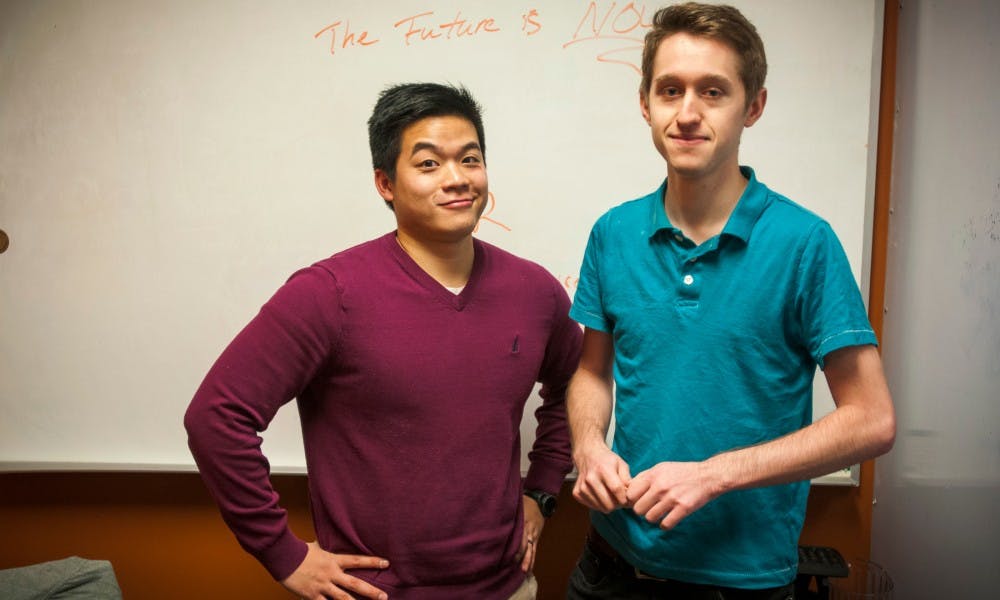Imagine exploring Buckingham Palace in London, exploring the Empire State Building or even exploring the Taj Mahal in India at the expense of only virtual reality while never leaving the classroom.
Two experience architecture MSU students, senior Tommy Truong and junior Eric Martin, are both researching new ways to bring virtual reality, or VR, directly into the classrooms.
“The goal of the project is to find affordable and accessible ways to implement virtual and augmented reality in both higher education, as well as K-12, with a focus in higher education,” Truong said.
The project initially began with a proposal from a friend at the Detroit Institute of Arts, or DIA.
“We had a friend from the Detroit Institute of Arts approach us a couple years ago with a proposal to innovate some method of modeling museum exhibits in the cheapest and easiest fashion that is affordable for those that are low-budget and be able to be done by those with lower amounts of technical skill,” Truong said.
Trying out virtual reality didn't hit the two until they found an oculus rift, which is a virtual reality headset.
Truong said upon trying it out they were able to find tools they were already using with their sketch-up for 3-D modeling and Unity, which is a video game creation engine.
“We were able to take those models and put them in a recreated environment of video gaming,” he said. “Anybody would be able to go around the museum and view it as if it were already built. After that came about we had the idea of extending that on to higher education and into classrooms outside of the museum.”
Truong and Martin wanted to answer the question of, "how can we utilize virtual reality technology through different means of hardware that would be affordable for students and accessible to any teacher, no matter their field?"
Since beginning research for their project, the duo has done a lot of talking around the country to other people about their project and performing demos.
“(We've been) mostly just demoing everything to other people at different conferences … for the most part it's been talking with other people about what we want to do with it and why we think it's viable or affordable and how we can be using it in the future,” Martin said.
Currently they are working with MSU Art, Art History and Design associate professor Jon Frey creating an augmented reality, or AR, version of what they have already been doing, Martin said.
“He’s been giving us models and we’ve been putting them into phone apps that students can use and look at them that way, instead of just having them up on projectors,” Martin said. “He’s trying to make his classroom more interactive and futuristic.”
Frey was put in touch with Truong and Martin from Assistant Dean at College of Arts and Letters Scott Schopieray when he asked him if he knew anyone who could assist him in building a DIY immersive visualization room. He said via email that the project was to explore new ways to make art history classes more engaging for his students.
“We worked together all term on a series of 'proof of concept' studies using multiple digital projectors (which had been installed already in the sculpture annex of the Kresge Art Center), Google cardboard, 3-D models of our own and on Sketchfab, and 3-D printed copies of artworks and artifacts,” he said in the email.
After the end of the term, the duo came back to Frey on their own initiative with their AR app they had been testing.
“Tommy and Eric are demonstrating by example that you don't need to be a graduate student or a professor to make important contributions in the fields in which you study,” Frey said.
The two have seen and reached a few roadblocks during their project run, something common with a lot of newer technology.
“We are not the subject matter experts of this in these respective fields,” Truong said. “We are two students who are trying to engage and be the catalyst for ways to innovate student interaction with the classroom and immersive content.”
Another issue they has come up and they hope to come up with solutions is to have it be inclusive and acceptable to students, regardless of disabilities.
Support student media!
Please consider donating to The State News and help fund the future of journalism.
“Once we’re able to get past both of those, then we can definitely see it being adopted more regularly at more institutions, as well as K-12,” Truong said.
Discussion
Share and discuss “Two MSU students hope to bring virtual reality to classrooms” on social media.







